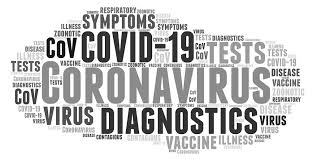In early November 2021, the B.1.1.529 (omicron) variant was first identified in South Africa and has rapidly become the dominant variant in Gauteng province, where a third wave of coronavirus disease 2019 (Covid-19) driven by the B.1.617.2 (delta) variant had largely subsided. As of November 15, the omicron variant was being detected in more than 75% of Covid-19–positive tests that were sequenced in South Africa1 (Figs. S1 and S2 in the Supplementary Appendix, available with the full text of this letter at NEJM.org). On November 26, the World Health Organization declared omicron a variant of concern. In a study of live-virus neutralization assays, omicron was shown to escape antibody neutralization by the BNT162b2 messenger RNA vaccine (Pfizer–BioNTech).2 Thus, data were needed regarding the effectiveness of the current vaccines against the omicron variant in preventing hospitalization for Covid-19.
Using data from Discovery Health, a South African managed care organization, we estimated the vaccine effectiveness of two doses of the BNT162b2 vaccine (i.e., full vaccination) against hospitalization for Covid-19 caused by the omicron variant by analyzing data sets that included the results of polymerase-chain-reaction (PCR) assays, preauthorization admission data, a full history of members’ medical records, registrations regarding chronic diseases, and data regarding body-mass index to obtain the number of Covid-19 risk factors per patient, according to the guidelines of the Centers for Disease Control and Prevention (CDC).3 Vaccination status was determined from claims data in the private sector, and patients who had been vaccinated in the public sector were listed in a vaccine category called “other vaccine type” (Table S4). Among fully vaccinated members, we compared the vaccine effectiveness against Covid-19 hospitalization associated with the omicron variant during the period from November 15 to December 7 in South Africa, which we dubbed a proxy for dominance of the omicron variant (omicron proxy period), against estimates of vaccine effectiveness between September 1 and October 30, when the delta variant was dominant (comparator period).
In our study, we used a test-negative design and data-exclusion rules to obtain estimates of vaccine effectiveness4 (Table S1), according to the following formula: 1−odds ratio for Covid-19 hospitalization in the vaccinated population, where the odds ratio was calculated with the use of logistic regression after adjustment for confounders of age, sex, previous Covid-19 infection, surveillance week, geographic location, and the number of CDC risk factors. In this analysis, Covid-19 hospitalization was a dependent variable, and vaccination status was included as an independent variable.
We then performed three sensitivity analyses on different subsets of data during the omicron proxy period. First, we performed PCR tests showing S-gene target failure as an indication of omicron infection. Second, we included only PCR results obtained from patients in Gauteng province, given the geographic concentration of the omicron variant during the study period. Third, we limited PCR test results to those obtained from patients who had been hospitalized (e.g., respiratory medical admissions), with the latter used as a proxy for identifying tests among a symptomatic population (Table S4).
We analyzed 133,437 PCR test results that had been obtained during the comparator period, of which 38,155 (28.6%) had been obtained at least 14 days after the patient had received the second dose of vaccine. For the proxy omicron period, we analyzed 78,173 PCR test results, of which 32,325 (41.4%) had been obtained at least 14 days after the second dose (Table 1). The overall test positivity was 6.4% during the comparator period and 24.4% during the proxy omicron period, whereas the Covid-19 admission rate was 10.8% and 2.2%, respectively, as a percentage of positive PCR test results. Patients with positive cases were younger during the proxy omicron period than during the comparator period (Table S3).
During the proxy omicron period, we found a vaccine effectiveness of 70% (95% confidence interval [CI], 62 to 76), a finding that was supported by the results of all sensitivity tests. This measure of vaccine effectiveness was significantly different from that during the comparator period, when the rate was 93% (95% CI, 90 to 94) against hospitalization for Covid-19 (Table 2).
Thus, during the proxy omicron period, we saw a maintenance of effectiveness of the BNT162b2 vaccine (albeit at a reduced level) against hospital admission for Covid-19 that was presumed to have been caused by the omicron variant as compared with the rate associated with the delta variant earlier in the year. The addition of a booster dose of vaccine may mitigate this reduction in vaccine effectiveness.5…







